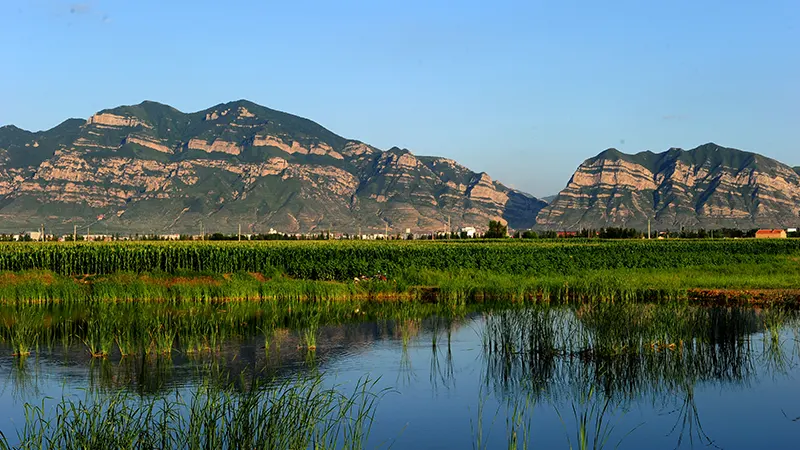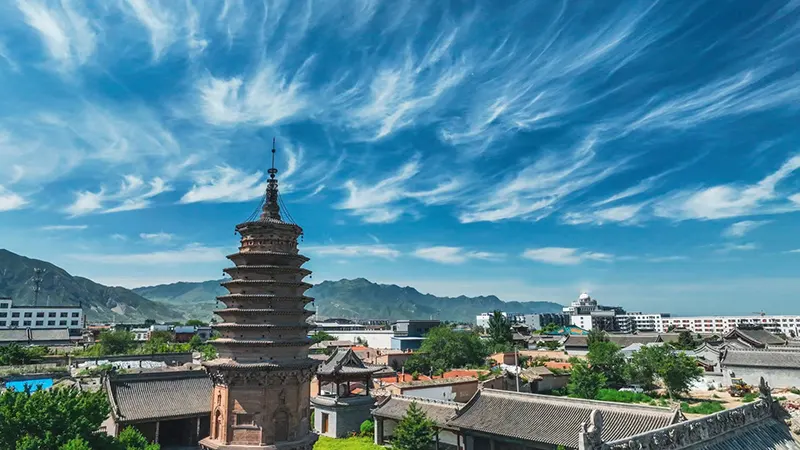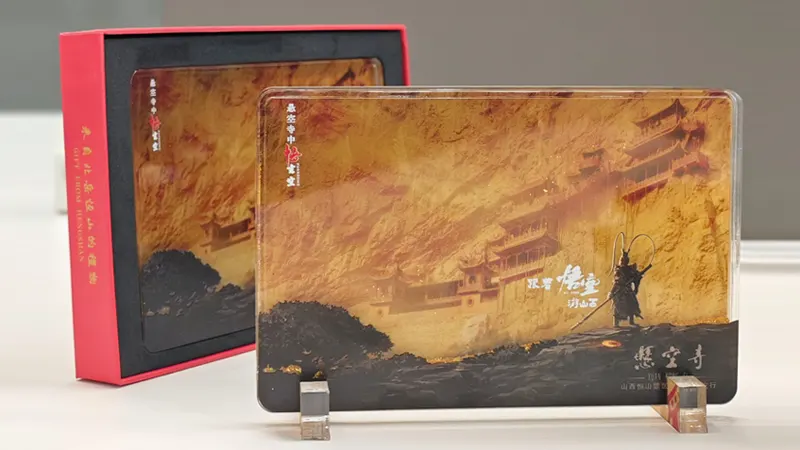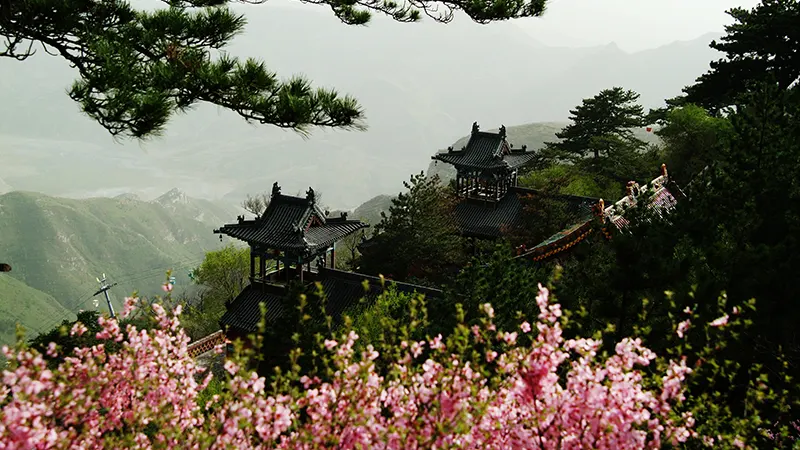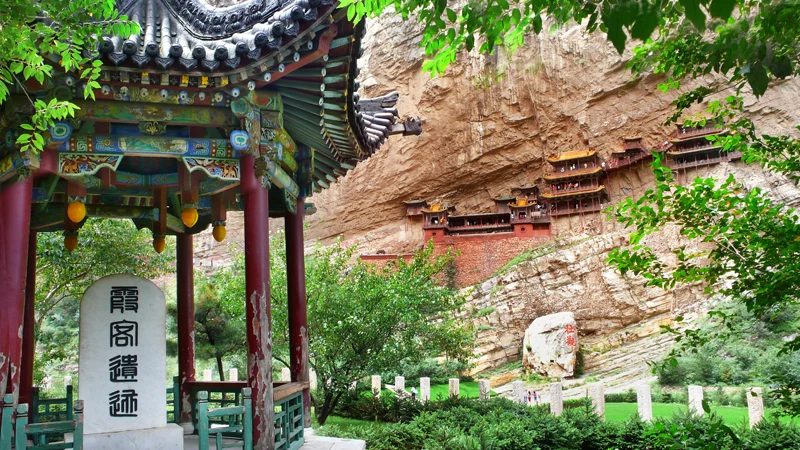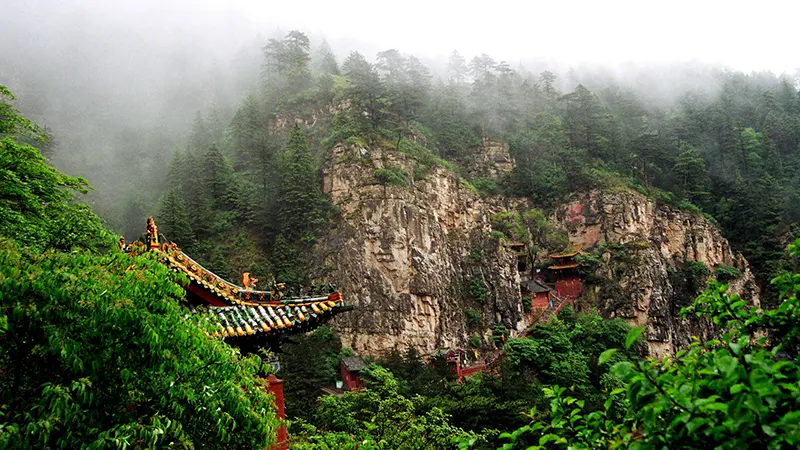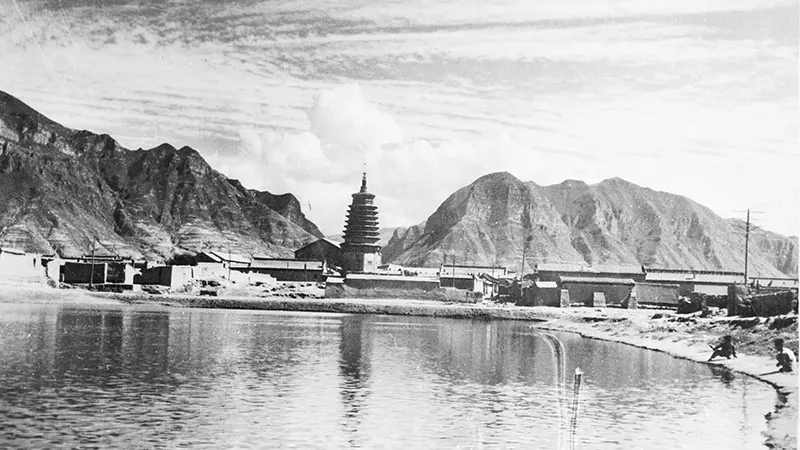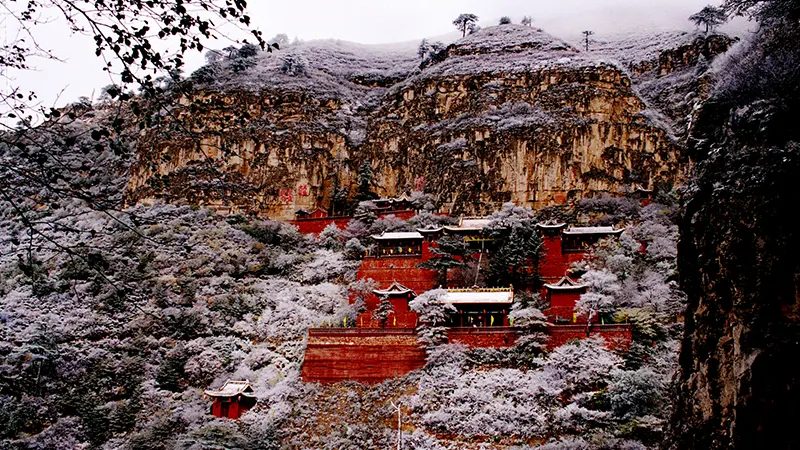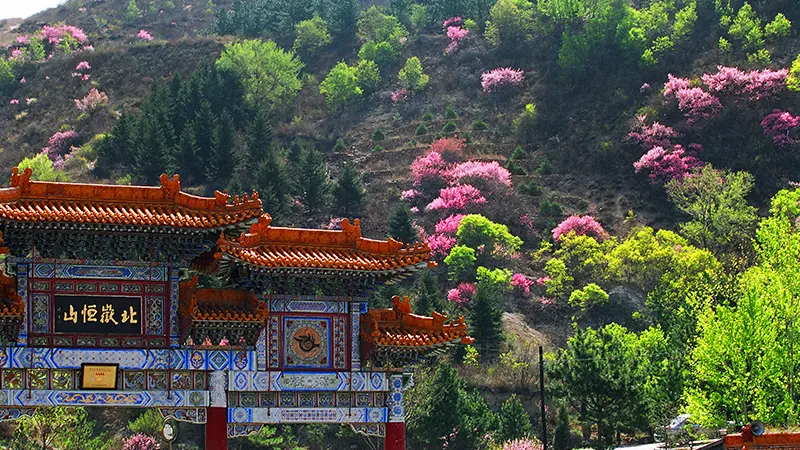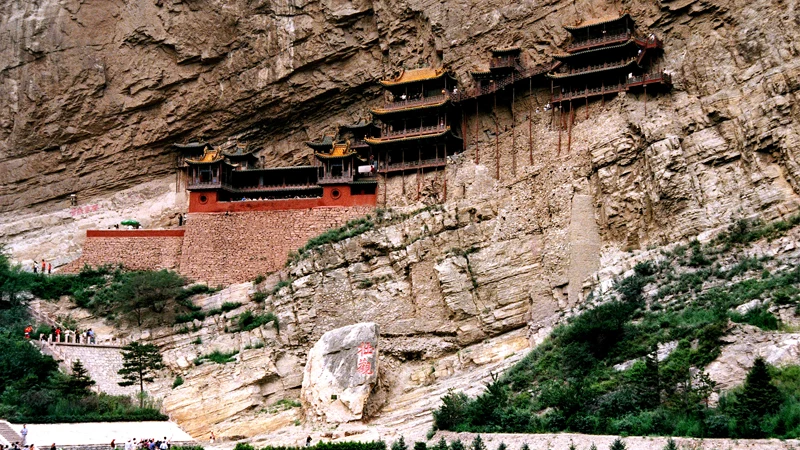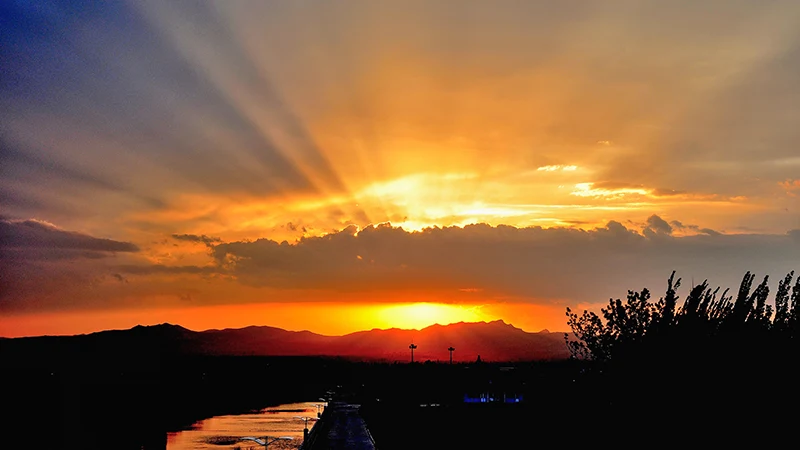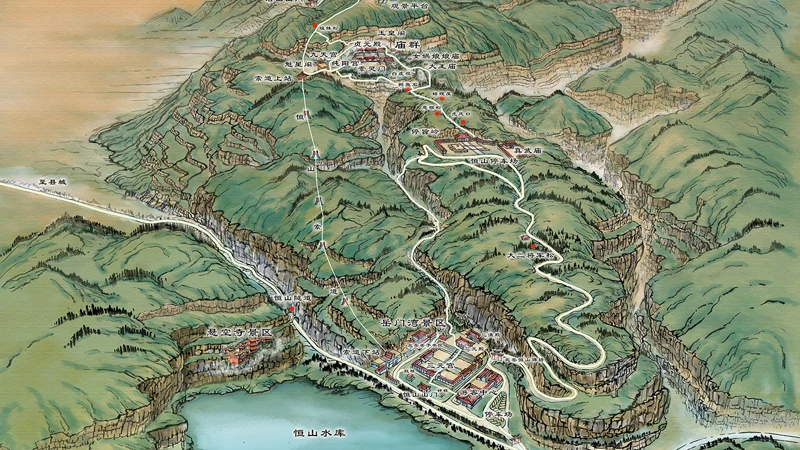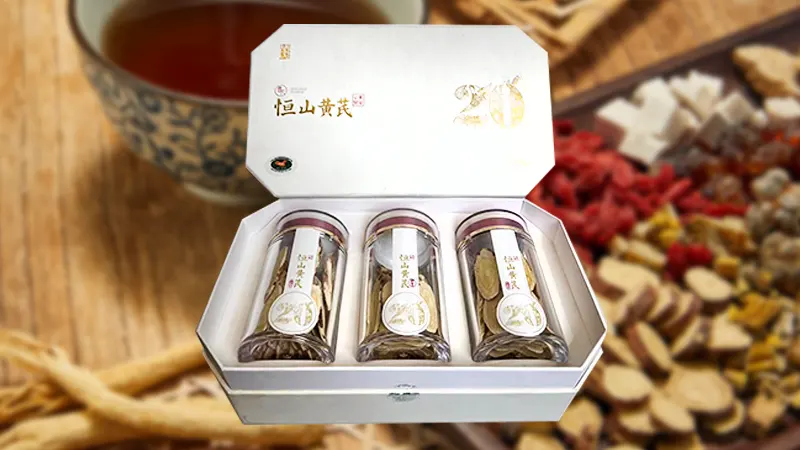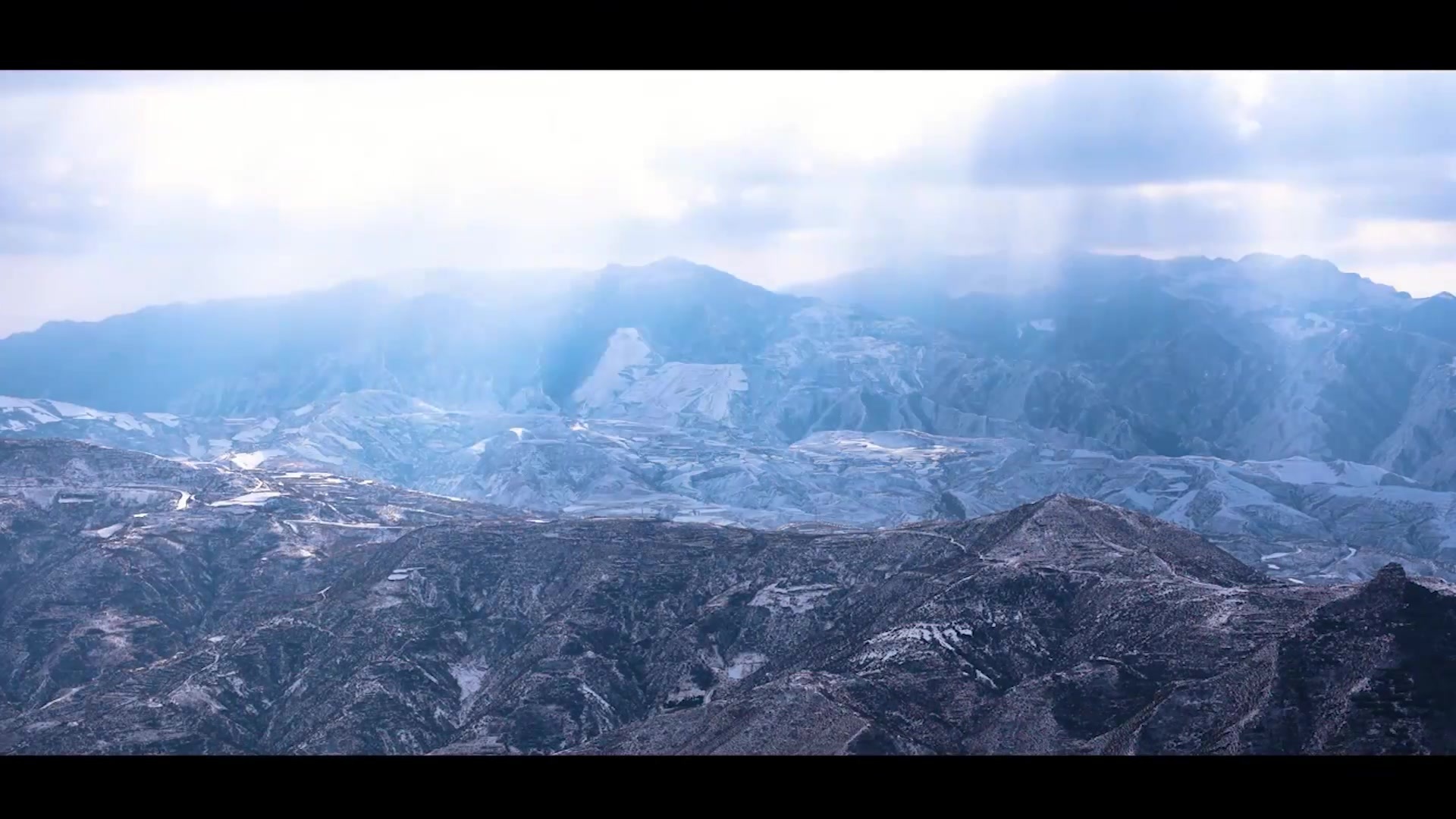Shao Yuanchong of the Republic of China | Brief Record of the 1935 Northern Mount Taihe Expedition
Publish Time:
2025-03-18 12:27
Source:
In the spring of 1935, the Nanjing Nationalist Government dispatched Shao Yuanchong, a member of the Central Executive Committee of the Kuomintang, and Zhang Ji, a member of the Central Supervisory Committee, to Shaanxi to pay homage to the Yellow Emperor's Mausoleum. After the ceremony, Shao Yuanchong went on an inspection tour of Northwest China, departing from Xi'an on April 25 and subsequently visiting Gansu, Qinghai, Ningxia, Inner Mongolia, and Shanxi.
Editor's Note
In the spring of 1935, the Nanjing Nationalist Government dispatched Shao Yuanchong, a member of the Central Executive Committee of the Kuomintang, and Zhang Ji, a member of the Central Supervisory Committee, to Shaanxi to pay homage to the Yellow Emperor's Mausoleum. After the ceremony, Shao Yuanchong went on an inspection tour of Northwest China, departing from Xi'an on April 25th and visiting Gansu, Qinghai, Ningxia, Inner Mongolia, and Shanxi. He kept a diary of this inspection tour, which has been preserved.
In October 1990, Shanghai People's Publishing House published the "Shao Yuanchong Diary." In August 2013, "Republic of China Shanxi Reader: Inspection Notes" was published by Sanjin Publishing House, including the section of Shao Yuanchong's diary about his inspection of Shanxi under the title "Brief Record of Shanxi Inspection." This article is an excerpt from the "Brief Record of Shanxi Inspection," focusing on his visits to Datong and Hunyuan, with a revised title.
Travelogues of modern figures visiting Hunyuan and Hengshan Mountain have always been a focus of this journal. We are pleased to publish this article for our readers.
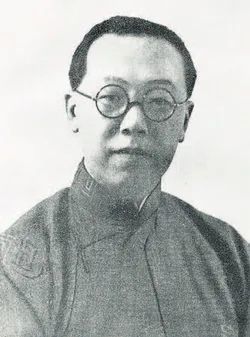
Shao Yuanchong (1890~1936), courtesy name Yi Ru, was a native of Shaoxing, Zhejiang Province. A former scholar, he was an early member of the Tongmenghui who studied in Japan. He once served as a confidential secretary and acting secretary-general in Sun Yat-sen's Guangzhou Grand Marshal's Office and was one of the witnesses to Sun's will. He held various positions, including Chairman of the Examination Selection Committee of the Examination Yuan, Acting President of the Legislative Yuan, and Director of the Party History and Materials Compilation Committee of the Kuomintang. He died during the Xi'an Incident.
A Brief Record of the Inspection of Mount Heng
By Shao Yuanchong

Inner page of "Republic of China Shanxi Reader: Inspection Notes"
July 23, Tuesday, Sunny
Arrived in Datong around 4 am. Cavalry Commander Zhao Chengshou (Yinpu, from Wutai) and Datong County Magistrate Lu Zongfu (Boxiong, from Jiaxing, a student of Zhejiang Higher School) and others came to greet me, so I got off the carriage and entered the city. Fu Yisheng took a car to Taiyuan at dawn. After entering the city, I stayed at the Shanxi Provincial Bank.
At 9:30 am, accompanied by Commander Zhao and Magistrate Lu, I went to Yungang. Located over thirty li west of the city in Wuzhou Mountain, Yungang Fort, we went up along the Wuzhou River, passing Guanyintang (with a three-dragon wall with colored glaze), and entering the Wuzhou Pass, the grottoes gradually came into view. This place is the boundary between Datong and Zuoyun counties. Datong was the capital of the Northern Wei Dynasty, which highly revered Buddhism. There were many pagodas, and the work of carving grottoes in Yungang took over a hundred years to complete. It was an important area for the imperial court during the Wei Dynasty. The grotto ceilings have inscriptions from the reign of Taihe, 17th year, showing ladies praying for the Wei Emperor. Originally, there were 95 large grottoes, and the Yuan Dynasty added 20 more niches with statues; many of the statues are well-preserved. In the past twenty years or so, Japanese bandits have often stolen the Buddha heads, resulting in much damage. Moreover, the rock is sandstone and has suffered many collapses. Urgent repairs are needed for preservation.
Recently, Commander Zhao built a villa next to the grottoes as a resting place for visitors, which is a thoughtful gesture.
I visited this place in the autumn of 14 years ago. Revisiting the old site and recalling past events brought deep feelings, so I carefully went through all the grottoes again.
Returned to the city around 1 pm and had lunch at Commander Zhao's residence.
After 4 pm, I went to the Great Huayan Temple on Qingyuan Street, commonly known as the Upper Temple. Built in the eighth year of the Qingning era of the Liao Dynasty, its murals are magnificent. There is also a Lower Huayan Temple; it is said that it was originally one temple, later divided into two. There are several bronze Buddha statues with lifelike expressions. The date of their casting remains to be determined. In front of the hall, there is a stone-carved Buddha Top Zunsheng Dharani Sutra stupa, from the Taikang period of the Liao Dynasty. I also saw the Nine Dragon Wall on Yanghe Street, said to be a screen wall from a Ming Dynasty Prince's mansion. It is five meters high and twenty meters wide, with nine dragons inlaid on it, all made of glazed tiles, with very lifelike expressions.
Returned around 7 pm. I attended a banquet hosted by Li Xiangyu (Yibai, from Qichun, Hubei), the president of the local court, and Magistrate Lu. The banquet ended around 9 pm. I checked my belongings and went to bed at 11:30 pm.
July 24, Wednesday, Sunny
Got up around 6 am and left Datong by mule litter, heading south towards Hunyuan County.
Arrived at the Luozhenying village office at 11:30 am to rest and have a small meal. Because many of the mule drivers smoked opium, we didn't leave until around 1 pm.
Crossed the Sanggan River at 2:30 pm.
Changed to horses at 7 pm.
Arrived at the north gate of Hunyuan at 8 pm. The county government arranged for accommodation at Hengxing Silver Shop in the west gate.
July 25, Thursday, Sunny
Left on horseback at 6:18 am for Hengshan Mountain, twenty li outside the city.
The records state: "Ten li high and one hundred and thirty li around, connected to Yuhua Peak in the north, Baishan in the east, and Qiangfengling mountain range in the south. Entering the Datong prefecture from the south of Yinshan Mountain, it turns west from Shuozhou to the east, encompassing Gouzhu, Fusu, Xiawu, and Ruyue. Abrupt cliffs rise to the south of the prefecture, forming Mount Heng. South of Mount Heng lie Taihang and Wangwu mountains, extending southwest to the river, and east to Zijin and Juyong, ending in the sea in the northeast. The Northern Yue Temple is built on the mountaintop, with eighteen scenic spots."
However, the debate over whether the Northern Yue is located in Quyang or Hunyuan continued among Qing Dynasty scholars. Gu Tinglin and Yan Baishi, citing the "Erya" and other books, believed it should be in Quyang. Those who believed it was in Hunyuan argued that after the loss of Yunzhong in the Song Dynasty, carriages could no longer reach it, thus necessitating a change in the location of the temple. During the Hongzhi era of the Ming Dynasty, Minister of War Ma Wensheng requested a correction of the temple records and moved the Northern Yue worship to Mount Heng in Hunyuan. Minister of Rites Ni Yue argued that the Quyang temple had been there for a long time, and it should remain. The temple in Hunyuan should be repaired. The emperor approved this. By the Qing Dynasty, it was officially determined that Mount Heng in Hunyuan was the Northern Yue.
The debate among ancient scholars was not about whether Mount Heng was in Hunyuan, but whether Mount Heng was the Northern Yue. However, from the Three Dynasties onwards, the Qin, Han, and Sui dynasties all worshipped the Northern Yue at Mount Heng in Hunyuan Prefecture. The Song Dynasty, after losing Hebei, worshipped at Quyang in Zhenzhou as a temporary measure. Their argument is not entirely unreasonable.
Leaving Hunyuan County, heading south for about ten li, we reached Ciyao Pass. The mountain range gradually narrowed, with crisscrossing streams, where the Tuoshui and Hengshui Rivers converge.
Further on, we reached the Hanging Temple. The temple is situated between the cliffs of Cui Ping Mountain, built by carving into the mountain and inserting wooden beams supported by long pillars, a structure seemingly suspended in mid-air. Two three-storied pavilions are built, each dozens of zhang high, separated by dozens of wu, and connected by a flying bridge; it is truly a unique structure. Some say it was built during the Northern Wei Dynasty; the only remaining relic is a stone tablet from the ninth year of the Da Ding era, indicating that at the latest, it dates back to the Jin Dynasty.
After a short while of sightseeing, we continued our journey for several li, following the winding mountain path. Upon reaching Yue Lu, the terrain suddenly opened up, with peaks encircling us, and a wide road appeared, where Heng Yue Fang is located. It was built in the tenth year of the Hongzhi reign of the Ming Dynasty, with the inscription “Hengshan Mountain” in four large characters. From here, we followed the winding path upwards; the mountain became increasingly majestic, and coal seams were exposed everywhere, indicating the richness of the land's resources. Further up, the slope became steeper, so we dismounted and continued on foot. The pines and cypresses in the mountain, some thicker than a person's embrace, were also strikingly beautiful. Passing Da Zi Ling, we saw two large characters, “Heng Zong”, each character measuring more than a zhang in width. We then passed De Yi An and Hu Feng Kou, where there is a stone tablet with the two large characters “Jie Shi”, each character about one and a half feet wide, inscribed by Dong Xi Shu, the magistrate of Hun Yuan during the Hongzhi reign of the Ming Dynasty. Further ahead, we passed Guo Lao Ling, where there are palm prints on a rock, said to be the handprints left by Zhang Guo when he fell from his donkey.
Half a li further, we reached Yue Miao Kou, with a lintel inscribed “Zhen Yuan Zhi Dian”. After climbing more than a hundred steps, we reached the temple. The temple buildings were not particularly grand, and most of the steles and stone tablets contained sacrificial texts from the Qing Dynasty. Only a stele from the twenty-first year of the Republic of China, with a meticulously crafted copy of the complete map of Mount Hengshan by Yue Ji Tai of Kou County, is still worth seeing. After a short rest, a monk guided us across the right cliff of Zi Zhi Yu to reach the summit. Looking down, we could see the cities of Hun Yuan and Ying Xian in the distance. Hengshan Mountain, among the Five Great Mountains, has nothing particularly unique or exceptionally high about it, but it is exceptionally steep and imposing, like an ancient warrior standing tall, with a solemn and majestic presence; this is why it is called a mountain. After lingering for a while, we turned back and descended to the temple for a small meal and rest.
Around 2 pm, we left the temple, passing Fei Shi Ku, Qin Gong, and Huan Yuan Dong before descending the mountain. The sun was quite strong. Around 4 pm, we returned to our lodgings in the county town and rested for a while. Then we went out to buy several books, including the “Hun Yuan County Annals” and its sequel. In the evening, we packed our bags and went to bed early.
July 26th, Friday, Sunny
At 5 am, we left Hun Yuan County by mule cart, heading west towards Ying Xian, following the foot of Hengshan Mountain along the way.
Around 11 am, we passed Xin Lun and rested, having a small meal.
We set off again at 11:30 am. Ten li from Ying Xian, County Magistrate Wang Ying Rong (Huan Ge) and others came to greet us. The weather was extremely hot, and as we were traveling west, the sun in the mule cart was scorching, making us feel very hot.
Around 4 pm, we arrived at Ying Xian County and stayed at the Gong Hui Yin Hao (bank). I felt unwell and had sudden bouts of vomiting and diarrhea.
Around 6 pm, despite my illness, I visited the Sakyamuni Pagoda. The pagoda is located in the Fo Gong Temple in the northwest corner of the city, built in the second year of the Qing Ning reign of the Liao Dynasty. It is entirely made of wood, without the use of bricks, tiles, or stones. The pagoda is six stories high, with each story about three zhang high. The first story has 24 pillars, and each story has a statue of Sakyamuni Buddha. The Buddha statue on the first story is about two zhang high. Western architects who have visited it in recent years have called it a miracle of the world. Emperor Dao Zong of the Liao Dynasty bestowed the name “Sakyamuni Pagoda”. It was originally called Bao Gong Temple, renamed Fo Gong Temple in the second year of the Yuan You reign, and renovated during the Wanli reign of the Ming Dynasty. After a short visit, I felt too tired to climb, so I returned to my lodgings to rest.
Along the way, I saw many men and women dressed in fine clothes, filling the streets. I heard that the city was holding a theatrical performance to celebrate the rain, so people from the surrounding areas had gathered to watch. I also heard that north of Yanmen Pass, from Datong to Hun Yuan and Ying Xian, the local customs are rather lax, and there is little separation between men and women; this is also the responsibility of local government officials.
In the evening, I went to bed.
…
Originally published in "Shao Yuan Chong's Diary"
Reprinted in "Republican Shanxi Reader: Field Notes"
Title added by the editor

Map of Shao's Inspection Route in Northwest China
Image from Baijiahao/Xiao Cui Kan Tan Ji
Proofread: Xue Fang
Edited: Xing Xue Lin
Author's Introduction
Shao Yuan Chong (1890-1936), originally named Ji, then Yong Shu, courtesy name Yuan Chong, alias Yi Ru. He was from Shaoxing, Zhejiang Province. In 1903, he passed the Xiucai examination. In 1906, he joined the Tongmenghui (China Alliance League). In 1907, he entered Zhejiang Higher School.
In 1911, he went to Japan for further studies and met Sun Yat-sen. In 1912, he returned to China and served as the editor-in-chief of the Shanghai Min Guo News. In March 1913, Song Jiaoren, a veteran member of the Kuomintang, was assassinated. The murderer, Ying Gui Xin, hid in the Shanghai concession. Shao Yuan Chong strongly urged the extradition of the criminal. After the outbreak of the "Second Revolution", in July 1913, Shao Yuan Chong went to Jiujiang, Jiangxi to participate in the anti-Yuan campaign, serving as the secretary-general of the headquarters of the Yangtze River forces. After the failure, he went to Japan again, then joined the Zhonghua Ge Ming Dang (Chinese Revolutionary Party), serving as editor of the Min Guo magazine, commander of the Shaoxing Revolutionary Army in Zhejiang, and commander of Shandong Garrison.
In September 1917, the Guangzhou Military Government was established, with Sun Yat-sen as the Grand Marshal, and Shao Yuan Chong as the Grand Marshal's Office confidential secretary, acting as the secretary-general. In the winter of 1919, Shao Yuan Chong went to Columbia University and the University of Wisconsin in the United States for further studies, and was commissioned by Sun Yat-sen to inspect overseas party affairs. In November 1923, he participated in a delegation to the Soviet Union. In 1924, at the First National Congress of the Kuomintang, he was elected as an alternate member and then a member of the Central Executive Committee, subsequently serving as a standing committee member of the Central Executive Committee, member of the Political Committee, member of the Supreme Headquarters Legal Committee, secretary-general of the Guangdong Army General Headquarters, political instructor of the Whampoa Military Academy, and acting director of the Political Department. At the end of the year, he accompanied Sun Yat-sen north, serving as his confidential secretary, president of the Min Guo Daily, member of the Beijing Political Branch, and one of the witnesses to Sun Yat-sen's will.
In 1927, he served as a member of the Zhejiang Provincial Political Branch and mayor of Hangzhou (later changed to mayor). In early 1928, he served as secretary-general of the Guangzhou Political Branch. In March 1929, the Kuomintang held its Third National Congress, and he was elected as a member of the Central Executive Committee and the Central Political Council. In 1930, he served as a member of the National Government, vice-president of the Legislative Yuan, chairman of the Examination Yuan's Examination Selection Committee, and acting president of the Legislative Yuan. He was re-elected as a member of the Central Executive Committee and the Central Political Council at the Fourth and Fifth National Congresses of the Kuomintang. In 1933, he served as the director of the Kuomintang Party History and Materials Compilation Committee.
In 1935, he traveled through Shaanxi, Gansu, Ningxia, Qinghai, Suiyuan, and Shanxi provinces. In 1936, after traveling through Guangxi and meeting with Li Zongren, Bai Chongxi, and others, he went to Xi'an to meet with Chiang Kai-shek, who was commanding the anti-communist campaign, only to encounter the Xi'an Incident. At that time, he was staying at the Jingxi Guesthouse. When he saw Zhang Xueliang and Yang Hucheng's troops enter, he wanted to jump out of the window to escape, but was hit by bullets and died two days later.
He had a collection of more than 100,000 books. His major works include "A Brief History of Revolutions in Various Countries," "A General Discussion of Sun Yat-sen's Doctrine," "The Road to National Construction," "On National Construction," "A True Record of the Prime Minister's Protection of the Constitution," "A History of the China Revolutionary Party," "Selected Speeches of Shao Yuanchong," and "Northwest Scenery." Many of his posthumous works remain unpublished.
Keywords:
Hengshan
Related News


